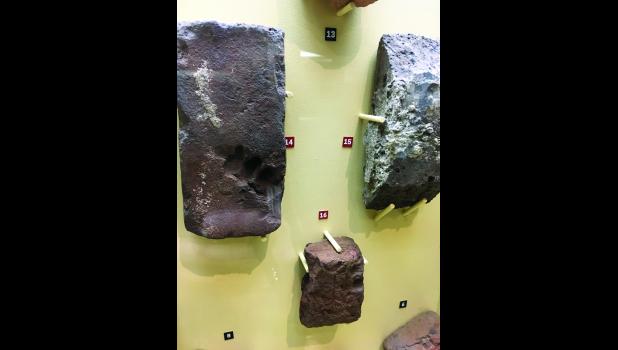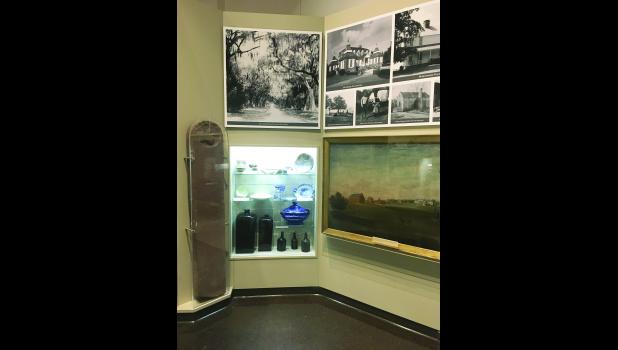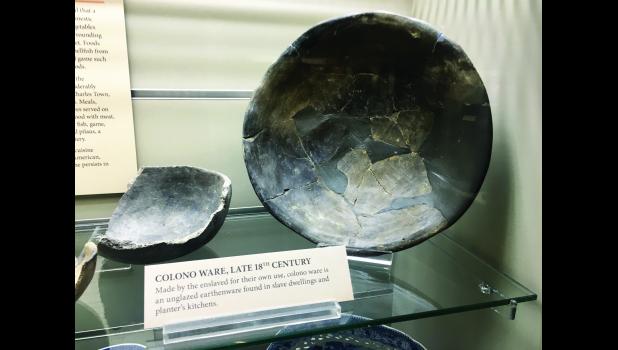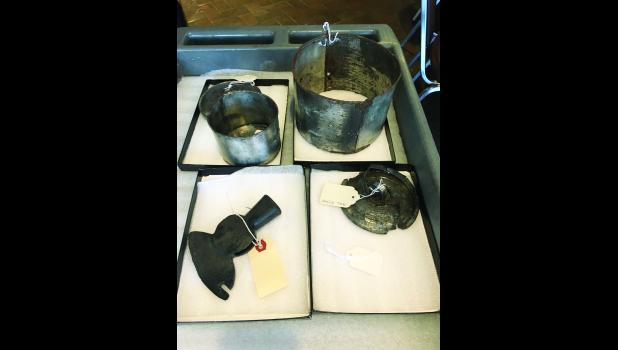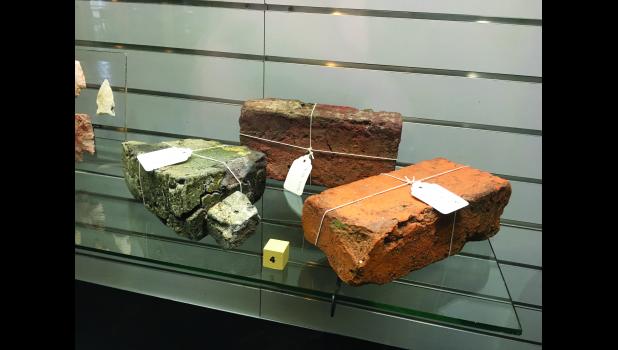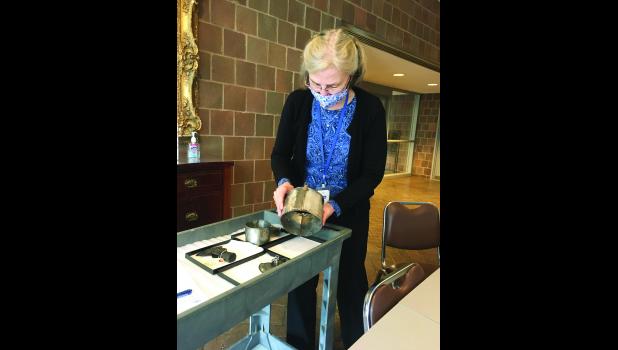A story of resilience
Wed, 02/03/2021 - 9:44am
admin
Discovering Daniel Island’s African American Past
By:
Elizabeth Bush
Editor’s Note: In recognition of Black History Month in February, The Daniel Island News is taking a closer look at the island’s first Black residents and the important and lasting contributions they made to their communities and beyond with a series of stories throughout the month. These stories are of resiliency and perseverance.
Pompey awoke with his parents and siblings at dawn, as he did nearly every morning. The day’s work would likely keep them busy until dusk.
Pompey was an enslaved boy living on the Lesesne Plantation of Daniel Island in the early 1700s, according to historical documents. His modest home, likely a one room abode with a dirt floor and thatched roof, was adjacent to the main plantation house. Some of the early products the plantation may have produced included timber, meats, and naval stores, such as tar and resin for ship building. Much of the settlement was located on the present day site of the LTP Daniel Island Tennis Center along the Wando River, as documented by local archaeologists and historians over the years.
“Daniel Island has been a part of Charleston’s history since 1673,” said Daniel Island Historical Society co-founder Michael Dahlman, who co-wrote the book “Daniel Island” with his son, Michael Dahlman Jr., to document the island’s evolution, beginning with its Native American occupation. “These nearly 350 years of the island’s life convey an incredible story of their own, a story buried in the ground and brought to life through archaeological work over the past several decades.”
Among those who have also done deep dives into the island’s past are Eric Poplin, senior archaeologist and vice president at Brockington & Associates, and Martha Zierden, curator of historical archaeology at the Charleston Museum. Both help paint a picture of
what life may have been like for the enslaved on Daniel Island more than three centuries ago.
“I suspect that they arrived pretty much as soon as the European colonists arrived here,” said Zierden, co-author of the book “Home Upriver: Rural life on Daniel’s Island, Berkeley County, South Carolina,” which chronicles the findings of the excavation work she and others completed at the former Lesesne and Fairbank Plantations on the island, prior to the construction of the Mark Clark Expressway. “Maybe not on the first boat, but certainly by the 1680s or so folks are in this area.”
An exhibit at the Charleston Museum reveals that the Black population in South Carolina grew exponentially between 1685 and 1775. Some 500 are documented in 1685, compared to 179,400 about 90 years later – the result of a massive transatlantic slave trade that would eventually bring millions of enslaved Africans to North America.
“I think that the main thing that we see is that the majority of the people who lived on Daniel Island, and certainly prior to the Civil War, the vast majority of people were enslaved Africans and African Americans,” noted Poplin, who has studied the island extensively over the years. “They are the ones who were performing the work and doing the labor on these properties.”
According to Brian Hicks, in an April 2011 article for The Post and Courier, approximately 400,000 of the 4 million slaves in the United States in 1860 resided in South Carolina.
“The city was built on slave labor,” Hicks wrote, “and for nearly 200 years thrived under a slave economy.”
On Daniel Island, the story was similar to that in other parts of the Lowcountry, where working plantations continued to churn out big profits. According to Poplin, the owners of the plantations were sometimes in residence on the island, but most also had homes in Charleston – so they would typically go back and forth. In their absence, the owners would often have overseers managing operations, but that was not always the case.
“Most of the people who were there every day were African Americans,” he said. “They were engaged in agricultural pursuits for the most part and subsistence activities – and they’re growing various crops.”
Some of those crops likely included indigo, in the mid to late 1700s, and possibly rice, added Poplin, although rice was “never an important crop on the island.” By the start of the Colonial period, sea island cotton was the primary product produced on Daniel Island, as well as other parts of the Lowcountry. At that time, there were several plantations on the island, noted Poplin.
“A community did develop on Daniel Island, undoubtedly amongst the people who were enslaved, even though they are living on different plantations,” he said. “They’re certainly neighboring each other and probably interacting a great deal.”
They were very “talented and knowledgeable,” continued Poplin, and masters of their tasks. Another money-producing operation on the island and along other parts of the Wando and Cooper Rivers during the antebellum period was brick-making.
“There was a big fire in Charleston in 1740 and after that there were ordinances requiring brick construction, so brick-making really kicks off big time in the region,” Poplin added. “…Literally tens of millions of bricks every year probably are being made.”
And they were made at the hands of slaves, who often left finger print impressions in their creations. Both Poplin and Zierden report that bricks made on Daniel Island were widely used in the construction of Charleston area homes and businesses.
“The people who worked those brick kilns also were later craftsmen,” Zierden noted. “So they literally built the city. I think that’s the bottom line.”
In her work excavating and studying the area under the I-526 bridge over Daniel Island in the 1980s, Zierden and her fellow team members found a number of artifacts that help piece together the story of the island’s early settlers. They discovered a variety of tools, soil markings denoting where structures once stood, a 19th century brick well where Governors Park stands today, pieces of colonoware, and more. Colonoware was unglazed earthenware created by slaves, mostly for personal use or to sell.
As part of what was known as the “task system,” once a slave’s task for the day was complete, he or she could use their time to raise crops or craft materials not just for their own use, but to barter with their owner or to barter in the Charleston market for profit.
“I think the thing that I’ve learned not just from that (Daniel Island) site but from others was just how resourceful folks were within the bounds of enslavement, coupled with what we know about the task system,” she continued. “Folks took advantage of those opportunities to do their own work, to participate in the market economy and to subvert the system a little bit.”
After nearly 200 years of slavery on Daniel Island, the end of the Civil War brought welcome changes. Not only were the enslaved granted their freedom, but they were able to move across the island and establish new residences, away from the plantation clusters they once called home. In the 1870s, the majority of the island was purchased by George Cunningham, who began “serious cattle and cotton operations,” Poplin noted. Cunningham hired people to work his lands – paying them either through cash labor, sharecropping or tenant farming.
“So they spread out from these clustered settlements,” Poplin continued. “…And there were new houses and little settlements that sprang up. That was especially true on the Wando side.”
The agricultural industry on Daniel Island would continue for at least another century, even after the island was purchased by Harry Frank Guggenheim in the mid-1900s. Once farming operations ended only a couple of homesites remained by the 1990s, prior to the start of today’s modern development.
Pompey and his family are but a few of the hundreds of enslaved Africans who once lived on this land. But the impact of their collective contributions will forever be an integral part of the island’s history.
“It is a rich story that speaks to the labor and craftsmanship of the Blacks who worked and died here,” Dahlman added. “This story endures today, as we continue to build the legacy of these 4,000 acres we call home.”
For additional information on Charleston history, make plans to visit the Charleston Museum, where you will find a treasure trove of exhibits and displays documenting the people, places and events that have shaped the Lowcountry’s story over time. To learn more, visit www.charlestonmuseum.org.
To find out how you can take part in a series of virtual events commemorating Black History Month, visit the website for the Charleston Area Branch of the Association for the Study of African American Life and History at https://chsasalh.com/2020/12/
*This story was updated online on 2.3.21.


